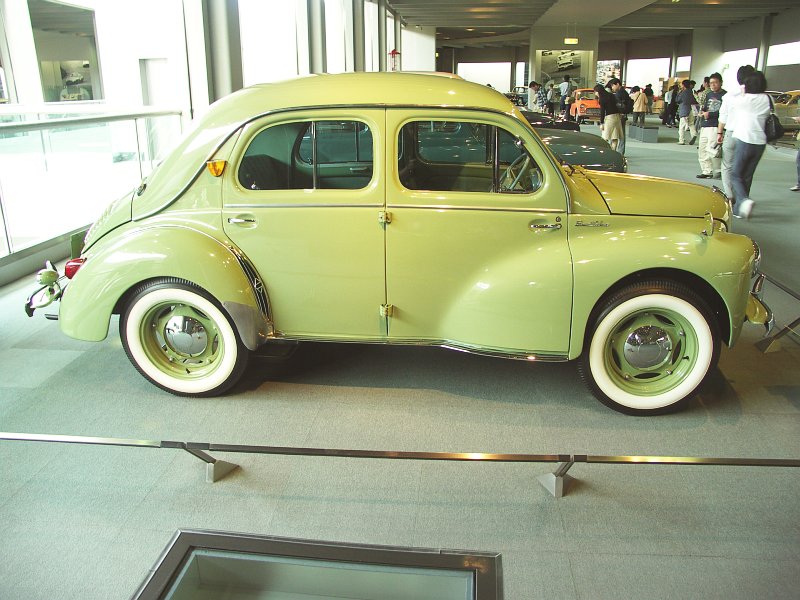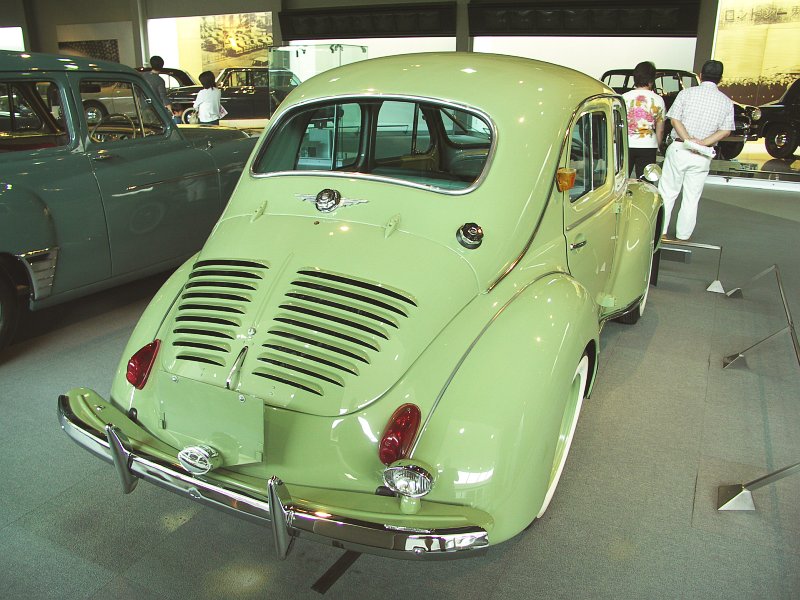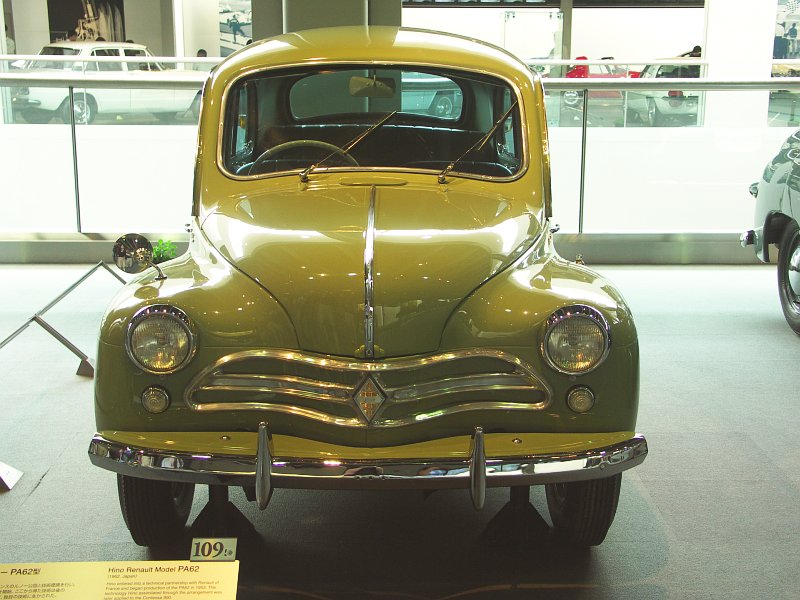Description
The Hino Renault PA62 was a small, distinctive car produced in Japan during the 1950s under license from Renault. It represented an important early collaboration between a Japanese manufacturer and a major European automaker—a partnership that helped introduce advanced Western engineering to Japan’s emerging postwar automotive industry. Based on the Renault 4CV, the Hino Renault PA62 combined French design with Japanese craftsmanship, marking one of the first attempts to produce a European-style passenger car for the Japanese market.
The design of the Hino Renault PA62 was directly derived from the Renault 4CV, a compact and charming car that had become one of France’s best-selling models after World War II. The PA62 featured the same rounded, rear-engined silhouette, with a sloping rear deck, integrated fenders, and a distinctive front fascia with horizontal grille bars and round headlamps. Its small size and cheerful appearance made it an appealing contrast to the larger, more conservative cars being developed by other Japanese manufacturers at the time.
Inside, the Hino Renault PA62 was designed to be simple and practical. The cabin could accommodate four passengers, with front bucket seats and a modest but functional dashboard layout. Materials were straightforward and durable, reflecting both Renault’s economy-oriented origins and Hino’s focus on reliability. Despite its compact size, the interior was surprisingly usable, and the rear-mounted engine freed up space for luggage in the front compartment.
Mechanically, the Hino Renault PA62 used the same powertrain as the Renault 4CV. It was powered by a 747 cc inline four-cylinder, water-cooled engine mounted at the rear, producing around 17–21 horsepower depending on specification. Power was delivered through a three-speed manual gearbox. While performance was modest—with a top speed of about 100 km/h (62 mph)—the car was light, efficient, and easy to handle. Its rear-engine layout provided excellent traction, a characteristic that made it well suited to Japan’s narrow, winding roads.
For Hino, which had previously focused on trucks and buses, the PA62 project was a way to gain experience in passenger car production. The company assembled the car under license beginning in 1953, using many locally produced components. The model designation “PA62” denoted the Japanese version of the Renault 4CV, adapted for local conditions. It was one of the earliest instances of licensed car production in Japan, paving the way for future collaborations between Japanese and European automakers.
Production of the Hino Renault PA62 continued until the late 1950s, when Hino began developing its own independent passenger car designs, such as the Contessa. By that time, the Japanese market had matured, and domestic manufacturers were becoming increasingly self-sufficient.
Today, the Hino Renault PA62 is an exceptionally rare car, both in Japan and worldwide. Its historical importance lies not in its production numbers but in its role as a bridge between postwar European design and the rise of Japan’s automotive industry. It symbolizes a period of transition when Japanese companies were learning and adapting foreign technology to lay the foundations for their own future success. Compact, charming, and technically significant, the Hino Renault PA62 remains an important early chapter in Japan’s automotive story.


